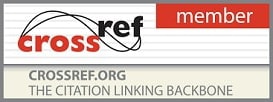Vol. 9, Special Issue 1, Part D (2025)
Impact of temperature on growth and sporulation of entomopathogenic fungi Cordyceps javanica (Frieder and Bally) and their bioefficacy against Spodoptera litura (Fabricius)
Renuka S Mahajan, MS Karmarkar, AL Narangalkar, MS Joshi, SK Mehendale, RS Mule, VN Jalgaonkar, PA Sahane and Vedantika V Jadhav
An investigation was conducted to study the effect of temperature on growth and sporulation of EPF Cordyceps javanica (Frieder and Bally) and their bio efficacy against Spodoptera litura (Fabricius) at Biological Control Laboratory, Department of Entomology, College of Agriculture, Dapoli (DBSKKV, Dapoli), Maharashtra-India. The cumulative highest radial growth (79.60 mm) and CFU count (353.60) of C. javanica was observed at 30 °C under the constant temperature condition, resulting in 58.00 -61.00 percent mortality of S. litura which was slightly reduced than control (27 ± 3 °C) but still maximum cumulative mortality as compared to other treatment, followed by at 25 °C with 61.40 mm radial growth and 325.60 CFU count (52.00 - 55.00% mortality), 35 °C with 44.60 mm growth and 254.40 CFU count (25.00 - 31.00% mortality), while at 20 °C reduced growth (30.20 mm), CFU count (134.40), and mortality were observed with 20.00 - 24.00 percent. At 40 °C recorded minimal cumulative radial growth (12.80 mm), CFU count (51.60), and 5.00 - 6.00 percent mortality. Under the Control conditions (27 ± 3 °C) yielded cumulative highest growth (89.40 mm), CFU count (371.00) and 61.00 - 63.00 percent mortality against S. litura. The result of experiment concluded that under the constant temperature conditions, optimal radial growth, and CFU count of C. javanica, was observed between 25 °C - 30 °C, which were identified as the most favorable temperatures for this EPF and resulted with maximum mortality percentage of S. litura. The probit analysis of C. javanica showed that LT50 values ranged from 5.8 to 13.8 days and LT95 values ranged from 17.6 - 66.2 days across radial growth and CFU count cultures, at all tested temperature excluding the 40 °C. These results demonstrate the significant influence of temperature on the mortality percentage and lethal time to cause 50 and 90 percent mortality rates of S. litura.
Pages: 261-266 | 1009 Views 291 Downloads








